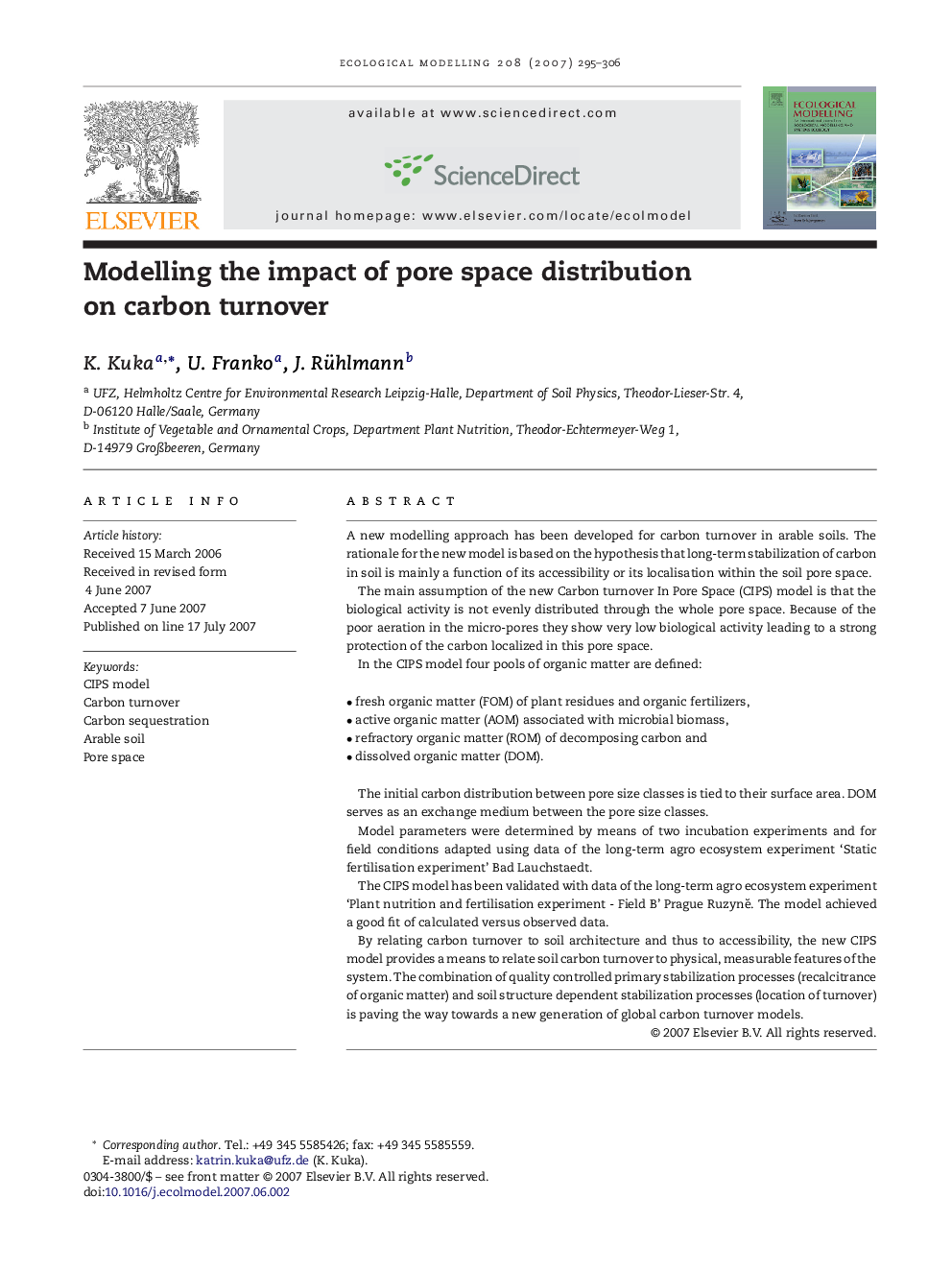| Article ID | Journal | Published Year | Pages | File Type |
|---|---|---|---|---|
| 4378416 | Ecological Modelling | 2007 | 12 Pages |
A new modelling approach has been developed for carbon turnover in arable soils. The rationale for the new model is based on the hypothesis that long-term stabilization of carbon in soil is mainly a function of its accessibility or its localisation within the soil pore space.The main assumption of the new Carbon turnover In Pore Space (CIPS) model is that the biological activity is not evenly distributed through the whole pore space. Because of the poor aeration in the micro-pores they show very low biological activity leading to a strong protection of the carbon localized in this pore space.In the CIPS model four pools of organic matter are defined:•fresh organic matter (FOM) of plant residues and organic fertilizers,•active organic matter (AOM) associated with microbial biomass,•refractory organic matter (ROM) of decomposing carbon and•dissolved organic matter (DOM).The initial carbon distribution between pore size classes is tied to their surface area. DOM serves as an exchange medium between the pore size classes.Model parameters were determined by means of two incubation experiments and for field conditions adapted using data of the long-term agro ecosystem experiment ‘Static fertilisation experiment’ Bad Lauchstaedt.The CIPS model has been validated with data of the long-term agro ecosystem experiment ‘Plant nutrition and fertilisation experiment - Field B’ Prague Ruzynĕ. The model achieved a good fit of calculated versus observed data.By relating carbon turnover to soil architecture and thus to accessibility, the new CIPS model provides a means to relate soil carbon turnover to physical, measurable features of the system. The combination of quality controlled primary stabilization processes (recalcitrance of organic matter) and soil structure dependent stabilization processes (location of turnover) is paving the way towards a new generation of global carbon turnover models.
